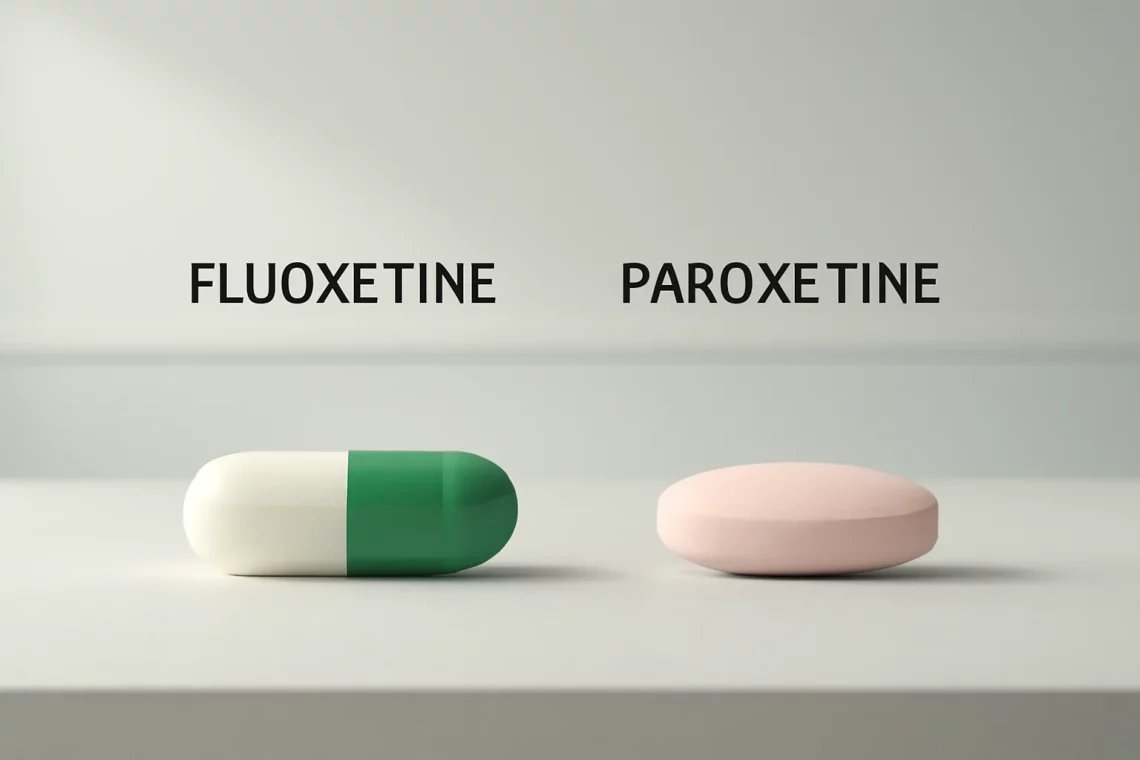
Fluoxetine vs Paroxetine: Choosing the Right Antidepressant for You
Fluoxetine and Paroxetine are two widely prescribed medications in the class of selective serotonin reuptake inhibitors (SSRIs). These drugs are primarily used to treat various mental health conditions, including major depressive disorder, anxiety disorders, and obsessive-compulsive disorder. Although they share a similar mechanism of action, their chemical composition, side effects, and uses can differ significantly. As more individuals seek treatment for mental health issues, understanding the nuances between these two medications becomes increasingly important.
In recent years, there has been a growing recognition of the significance of mental health, leading to more people seeking help. The stigma around mental health issues is gradually dissipating, prompting discussions about effective treatment options. Fluoxetine and Paroxetine are often at the forefront of these discussions, given their prevalence in treatment plans. However, choosing between these medications may not be straightforward, as individual responses can vary widely. Factors such as a patient’s specific symptoms, medical history, and lifestyle can all influence which medication may be more suitable.
In this context, it is essential to delve deeper into the differences and similarities between Fluoxetine and Paroxetine to help patients and healthcare providers make informed decisions.
Understanding Fluoxetine
Fluoxetine is one of the first SSRIs developed and is commonly known by its brand name, Prozac. It works by increasing the levels of serotonin in the brain, a neurotransmitter that plays a crucial role in mood regulation. By inhibiting the reuptake of serotonin, Fluoxetine helps enhance mood and alleviate symptoms of depression and anxiety.
Fluoxetine is typically prescribed for various conditions, including depression, panic disorder, and bulimia nervosa. One of the key advantages of Fluoxetine is its relatively long half-life, which means it stays in the body for an extended period. This can be beneficial for patients as it may lead to fewer withdrawal symptoms if a dose is missed. Additionally, Fluoxetine is often well-tolerated by many patients, with a side effect profile that is manageable for most.
However, like all medications, Fluoxetine is not without its potential side effects. Common side effects may include insomnia, headache, nausea, and sexual dysfunction. In some cases, patients may experience increased anxiety when they first start taking the medication. It is essential for individuals to communicate with their healthcare provider if they experience these side effects, as adjustments may be necessary.
Fluoxetine is often a first-line treatment option for many mental health conditions due to its efficacy and safety profile. However, it may not be suitable for everyone, and some individuals may find that another medication, such as Paroxetine, is more effective for their specific symptoms.
Understanding Paroxetine
Paroxetine, commonly known by its brand name Paxil, is another SSRI that is frequently prescribed for various mental health disorders. Like Fluoxetine, Paroxetine works by increasing serotonin levels in the brain, but it has a slightly different chemical structure and pharmacokinetics. This can lead to different effects and side effects in patients.
Paroxetine is often prescribed for conditions such as generalized anxiety disorder, social anxiety disorder, and obsessive-compulsive disorder, in addition to depression. One of the notable features of Paroxetine is its rapid onset of action compared to other SSRIs, which can provide relief to patients more quickly. However, this rapid onset may also be accompanied by a more pronounced set of initial side effects, such as drowsiness or fatigue.
While Paroxetine can be effective for many patients, it also has a more significant risk of withdrawal symptoms if the medication is discontinued abruptly. This is due to its shorter half-life compared to Fluoxetine. Patients considering Paroxetine should be aware of this and discuss a tapering plan with their healthcare provider if discontinuation is necessary.
Another critical point to consider is that Paroxetine is associated with weight gain in some patients, which can be a concern for those who are already struggling with body image issues or weight management. Additionally, it may have a higher incidence of sexual side effects compared to Fluoxetine, which can impact adherence to the medication.
Ultimately, while Paroxetine may be the right choice for some individuals, it is essential to weigh the benefits and potential drawbacks carefully. Open communication with healthcare providers can help ensure that patients find the most suitable treatment for their needs.
Comparative Analysis of Fluoxetine and Paroxetine
When comparing Fluoxetine and Paroxetine, several factors come into play, including efficacy, side effects, and patient preferences. Both medications are effective in treating depression and anxiety, but individual responses can vary significantly.
Efficacy is often the most critical factor in choosing a medication. Studies have shown that both Fluoxetine and Paroxetine can be effective in reducing symptoms of depression and anxiety. However, some patients may respond better to one medication than the other. This can be influenced by various factors, including genetic predispositions, the severity of symptoms, and co-occurring health conditions.
Side effects are also an important consideration. While both medications share common side effects like nausea and sexual dysfunction, they can differ in terms of how frequently these side effects occur. As mentioned earlier, Paroxetine may lead to more significant weight gain and sedation than Fluoxetine, which might be a pivotal consideration for some patients.
Another point of comparison is the withdrawal symptoms associated with each medication. Fluoxetine’s long half-life generally results in fewer withdrawal symptoms, making it easier for patients to manage if they miss a dose or decide to discontinue the medication. Conversely, Paroxetine’s shorter half-life can result in more noticeable withdrawal symptoms, making it essential for patients to follow a healthcare provider’s guidance closely when tapering off the medication.
Patient preferences also play a crucial role in medication adherence. Some individuals may prefer Fluoxetine due to its favorable side effect profile, while others may find Paroxetine’s quicker onset of action more appealing. It is essential for healthcare providers to consider these preferences when discussing treatment options with their patients.
Making an Informed Choice
Choosing between Fluoxetine and Paroxetine ultimately requires a comprehensive understanding of the individual’s unique circumstances, including their mental health history, lifestyle, and treatment goals. It is vital for patients to engage in open discussions with their healthcare providers to explore the best options available.
Patients should come prepared to discuss their symptoms, any previous treatments they have tried, and how those treatments affected them. This information can help healthcare providers tailor a treatment plan that aligns with the patient’s needs and preferences.
Moreover, patients should be encouraged to ask questions about potential side effects, the expected timeline for feeling better, and what to do if they experience adverse reactions. Having a clear understanding of what to expect can empower patients and help them manage their treatment journey more effectively.
Additionally, ongoing monitoring is crucial for both Fluoxetine and Paroxetine. Regular follow-ups with a healthcare provider can help assess the effectiveness of the medication and make necessary adjustments. This collaborative approach can lead to better outcomes and improved quality of life for individuals dealing with mental health issues.
In conclusion, both Fluoxetine and Paroxetine have their unique benefits and challenges. The decision between the two should be made collaboratively between the patient and their healthcare provider, taking into account individual needs and circumstances.
**Disclaimer: This article is for informational purposes only and does not constitute medical advice. Always consult with a healthcare professional for medical concerns or questions.**




